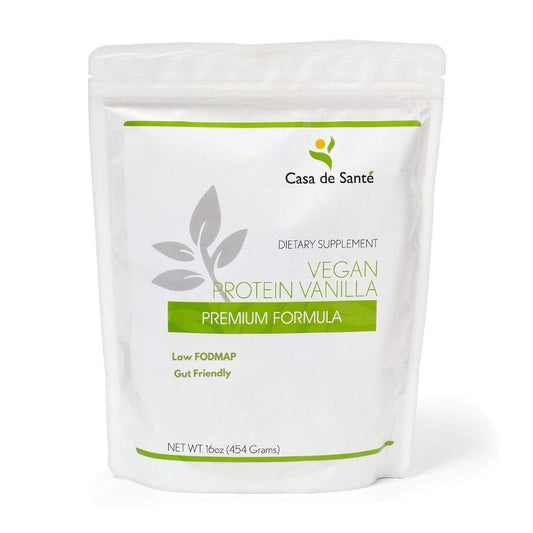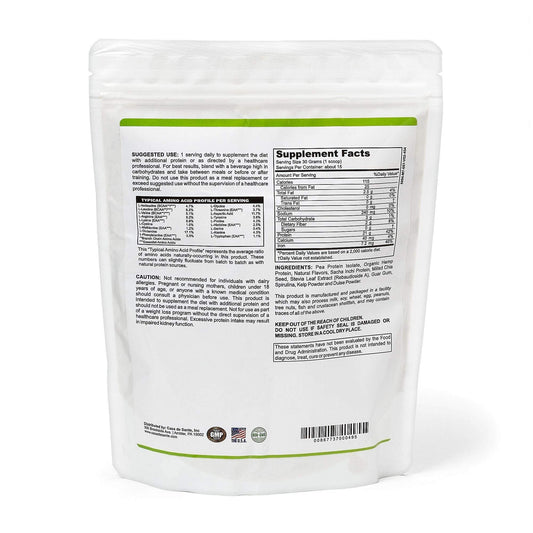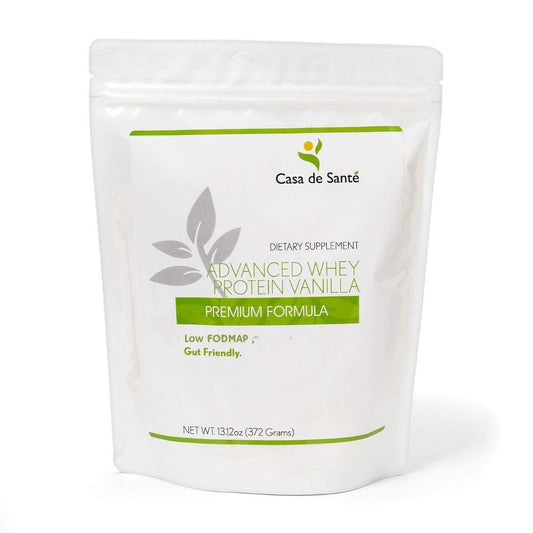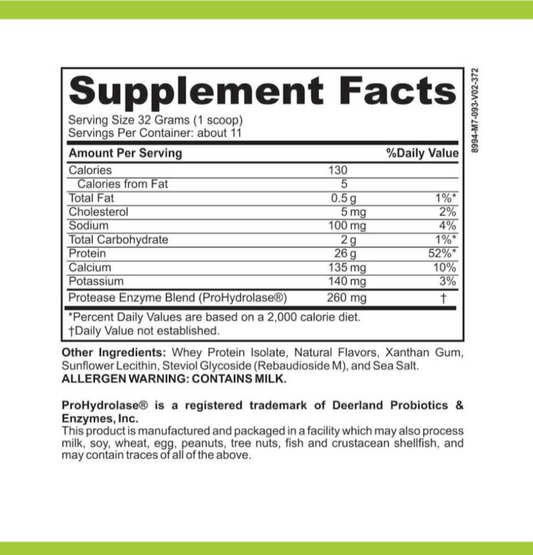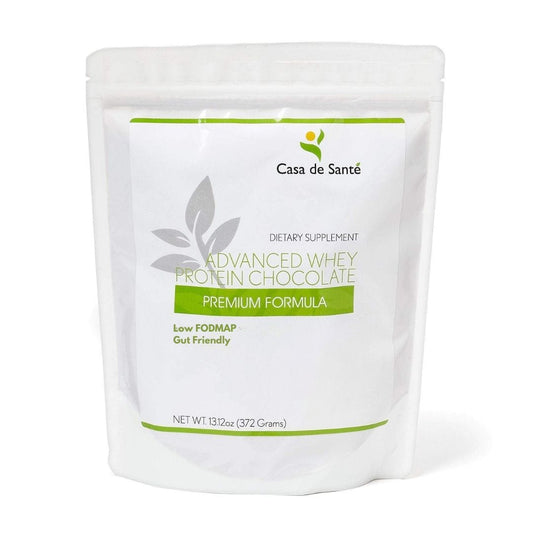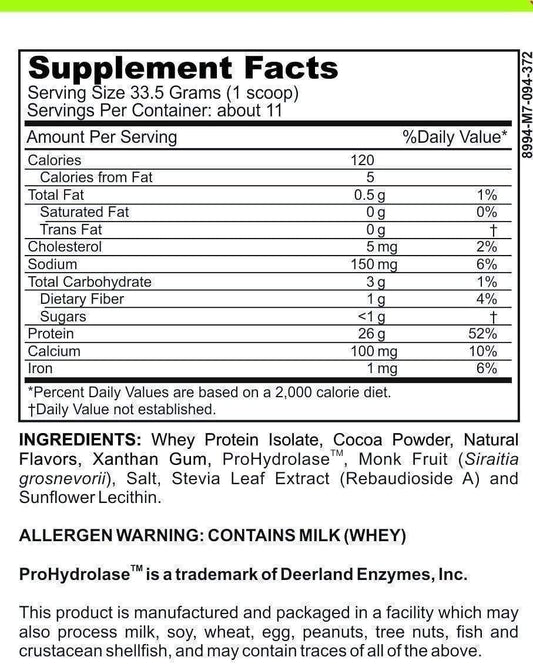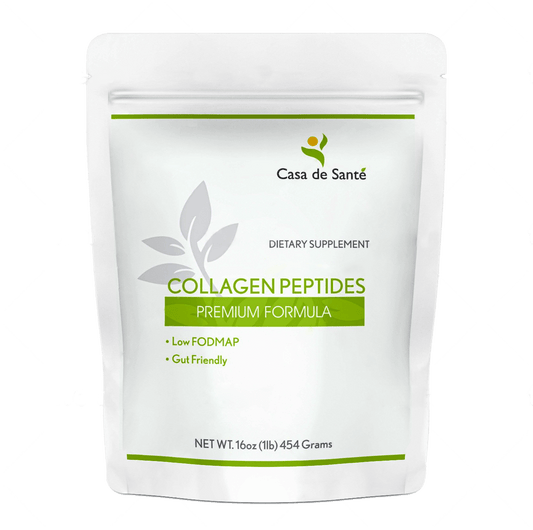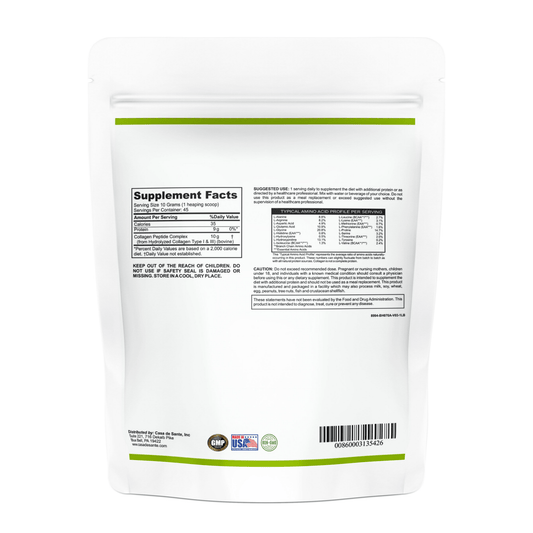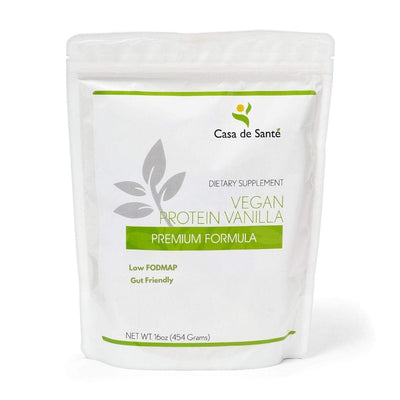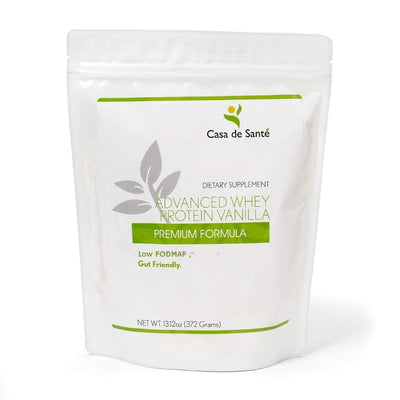Lentil Protein Powder Vs Pea Protein Powder
Lentil Protein Powder Vs Pea Protein Powder
Plant-based protein powders have become increasingly popular in recent years, with lentil protein powder and pea protein powder emerging as two of the top choices among health-conscious individuals. As individuals become more mindful of their dietary choices and seek out alternatives to animal-based proteins, understanding the benefits and differences between these two plant-based options is crucial.
Understanding the Benefits of Plant-Based Protein Powders
Before diving into the specifics of lentil protein powder and pea protein powder, let's first explore the overall benefits of incorporating plant-based protein powders into your diet. Plant-based protein powders are derived from natural sources and are packed with essential amino acids, providing the building blocks necessary for muscle repair and growth.
In addition to their high protein content, plant-based protein powders are also known for being rich in other key nutrients. They are typically low in fat, carbohydrates, and cholesterol, making them a favorable option for those looking to maintain or lose weight. Furthermore, plant-based protein powders are often gluten-free, making them suitable for individuals with gluten intolerance or celiac disease.
Now, let's delve deeper into the specifics of lentil protein powder and pea protein powder, comparing their nutritional profiles and examining other factors that are important to consider when choosing between the two.
A Closer Look at Lentil Protein Powder
Lentil protein powder is derived from lentils, which are legumes known for their high protein content. Lentils are a complete protein source, meaning they contain all nine essential amino acids required by the body. This makes lentil protein powder an excellent choice for individuals following a plant-based or vegetarian diet.
In addition to its impressive amino acid profile, lentil protein powder is also rich in iron, folate, and fiber. Iron is essential for transporting oxygen to cells and plays a crucial role in energy production, while folate is necessary for cell growth and development. The fiber content in lentil protein powder supports healthy digestion and helps maintain a feeling of fullness, making it a beneficial addition to a weight loss or weight maintenance regimen.
Exploring the Nutritional Profile of Pea Protein Powder
Pea protein powder, as the name suggests, is derived from yellow split peas. Like lentil protein powder, pea protein powder is considered a complete protein source, providing all the essential amino acids required by the body. It is particularly rich in branched-chain amino acids (BCAAs), which are renowned for their ability to support muscle recovery and growth.
In addition to its impressive amino acid profile, pea protein powder also boasts high levels of iron, calcium, and zinc. Iron is essential for oxygen transport and energy production, while calcium is crucial for maintaining strong bones and teeth. Zinc, on the other hand, is vital for a healthy immune system and aids in wound healing.
Both lentil protein powder and pea protein powder offer a range of health benefits, but when it comes to comparing the protein content, digestibility, amino acid composition, taste, texture, fiber content, allergenic potential, environmental impact, and cooking versatility, there are some notable differences to consider.
Comparing the Protein Content: Lentil vs Pea Powder
When comparing the protein content of lentil protein powder and pea protein powder, it is important to note that pea protein powder typically has a slightly higher protein content. While lentil protein powder generally contains around 20 to 25 grams of protein per serving, pea protein powder can provide up to 30 grams of protein per serving.
For individuals who specifically aim to maximize their protein intake, pea protein powder may be the preferred choice. However, it is essential to consider other factors such as taste, texture, and individual dietary needs.
Examining the Digestibility and Absorption Rates of Lentil and Pea Protein Powders
Another crucial factor to consider when comparing lentil protein powder and pea protein powder is their digestibility and absorption rates. While both are highly digestible compared to other plant-based protein sources, pea protein powder tends to be easier to digest for most individuals due to its lower fiber content.
However, for individuals seeking the added benefits of fiber and its positive impact on digestion and satiety, lentil protein powder may be the preferred choice. The fiber content in lentil protein powder can support a healthy gut and aid in weight management by promoting feelings of fullness.
Ultimately, the choice between lentil protein powder and pea protein powder in terms of digestibility and absorption rates depends on individual digestive health and personal preferences.
Essential Amino Acid Composition: Which Powder Comes Out on Top?
The essential amino acid composition of lentil protein powder and pea protein powder is another important factor to consider. Both plant-based protein powders contain all nine essential amino acids required by the body, but their composition differs slightly.
Lentil protein powder is notably rich in lysine, an amino acid that plays a crucial role in collagen synthesis, calcium absorption, and immune function. Pea protein powder, on the other hand, is particularly abundant in arginine and leucine, two amino acids involved in muscle protein synthesis and growth.
It is worth noting that the differences in amino acid composition between lentil and pea protein powders are minor and should not be a significant factor in decision-making for most individuals. Both options provide an adequate balance of amino acids necessary for overall health and muscle recovery.
Evaluating the Taste and Texture of Lentil and Pea Protein Powders
When it comes to taste and texture, individual preferences play a significant role. Lentil protein powder often has a milder and slightly nutty flavor, making it more versatile for blending into various recipes without overpowering the taste. Pea protein powder, on the other hand, can have a slightly earthier taste and a slightly grittier texture.
However, many brands offer flavored varieties of both lentil and pea protein powders, allowing individuals to select options that align with their taste preferences. Additionally, blending protein powder with a variety of ingredients, such as fruits, vegetables, and spices, can help customize the flavor and texture to suit individual preferences.
The Role of Fiber in Lentil and Pea Protein Powders: Which is Better for Digestion?
Fiber plays a significant role in digestion and overall gut health. While both lentil protein powder and pea protein powder contain fiber, lentil protein powder typically has a higher fiber content.
The fiber in lentil protein powder supports a healthy digestive system by promoting regular bowel movements, preventing constipation, and nourishing beneficial gut bacteria. It can also aid in maintaining a healthy weight by increasing feelings of fullness and reducing appetite.
However, individuals with sensitive digestive systems may find that the higher fiber content in lentil protein powder can lead to gas or bloating. In such cases, pea protein powder, with its lower fiber content, may be a better option for digestive comfort.
Allergies and Sensitivities: Are There Differences between Lentil and Pea Protein Powders?
When it comes to allergies and sensitivities, both lentil protein powder and pea protein powder are generally well-tolerated. However, it is crucial to note that individuals with legume allergies should exercise caution when considering lentil or pea protein powders, as they may still experience allergic reactions.
Additionally, individuals with specific food sensitivities or intolerances should carefully check the ingredient labels of protein powder products to ensure they are free from any potential allergens or ingredients that may cause adverse reactions.
Environmental Impact: Analyzing the Sustainability of Lentil vs Pea Protein Powders
Considering the environmental impact of various food choices is increasingly important. Both lentils and peas are considered environmentally friendly crops with relatively low water usage and minimal carbon emissions compared to animal-based protein sources.
However, peas have the added advantage of being able to fix nitrogen in the soil, reducing the need for synthetic fertilizers and contributing to soil health. This characteristic makes pea protein powder a more sustainable choice overall.
If minimizing your ecological footprint is a priority, opting for pea protein powder may align better with your values.
Incorporating Plant-Based Proteins into Your Diet: Choosing Between Lentil and Pea Powder
When incorporating plant-based proteins into your diet, it ultimately comes down to personal preference and individual dietary needs. Both lentil protein powder and pea protein powder offer a wide range of health benefits and are versatile in various culinary applications.
If you are looking for a protein powder with a slightly higher protein content, pea protein powder may be the right choice for you. On the other hand, if you value a higher fiber content and the potential digestive benefits it offers, lentil protein powder may be more suitable.
It may also be beneficial to consult with a registered dietitian or nutritionist to determine which option aligns best with your specific goals, dietary needs, and taste preferences.
Fitness Goals: Determining Which Protein Powder is Ideal for Muscle Building or Weight Loss
Whether your fitness goals revolve around muscle building or weight loss, both lentil protein powder and pea protein powder can support your aspirations.
For individuals aiming to build muscle, pea protein powder stands out due to its favorable amino acid profile, particularly rich in leucine, and its ability to support muscle protein synthesis and growth. It can be particularly beneficial when consumed post-workout to aid in recovery.
On the other hand, individuals focused on weight loss may prefer lentil protein powder due to its higher fiber content. The fiber can help promote satiety, reducing appetite and aiding in weight management.
Ultimately, selecting the ideal protein powder for your fitness goals should be based on individual preferences, dietary needs, and consultation with a knowledgeable healthcare professional or fitness expert.
Cooking and Baking with Lentil and Pea Protein Powders: Tips, Tricks, and Recipes
Both lentil protein powder and pea protein powder can be used in a variety of recipes to enhance the nutritional content and protein value of meals and snacks.
When cooking or baking with plant-based protein powders, it is crucial to consider the flavor, texture, and potential impact on the final dish. For recipes that require a milder flavor and smoother texture, such as smoothies, lentil protein powder may be the preferred choice. However, pea protein powder can also be easily incorporated into smoothies, giving an earthy flavor and a slight thickness.
For recipes that involve heat or prolonged cooking times, such as baked goods or pancakes, both lentil and pea protein powders can be used interchangeably. It is advisable to start with a small amount and adjust the quantity based on personal taste preferences and desired protein content.
To inspire your culinary ventures, here are a few recipe ideas:
- Lentil Protein Pancakes: Combine lentil protein powder, mashed banana, oats, almond milk, and a pinch of cinnamon. Cook the batter on a non-stick pan to create delicious and protein-packed pancakes.
- Pea Protein Energy Balls: Mix pea protein powder, almond butter, dates, chia seeds, and a touch of maple syrup in a food processor. Roll the mixture into small balls and refrigerate for a tasty and nutritious snack.
- Lentil Protein Brownies: Blend lentil protein powder, cocoa powder, almond flour, ripe avocado, and sweetener of choice. Bake the mixture in a square pan to create rich, fudgy brownies with an added protein punch.
Experimenting with different recipes and incorporating lentil and pea protein powders into your cooking and baking endeavors can not only increase your protein intake but also add a variety of flavors and textures to your meals.
Price Comparison: Is there a Significant Difference in Cost between Lentil and Pea Powders?
When it comes to the cost, both lentil protein powder and pea protein powder fall within a similar price range. The exact price will vary depending on the brand, quality, and quantity of protein powder purchased.
While specific prices may fluctuate, comparing different brands and purchasing options can help identify the most cost-effective solution for your protein powder needs.
Examining the Research: Studies on the Health Benefits of Lentil and Pea Protein Powders
Scientific research on the health benefits of lentil protein powder and pea protein powder is still relatively limited compared to studies on animal-based protein sources. However, several studies indicate promising results regarding the health benefits of both plant-based protein powders.
Studies have shown that consuming lentil protein powder can enhance glycemic control, improve satiety, and help reduce blood pressure levels. Pea protein powder has demonstrated its effectiveness in supporting muscle growth, aiding in weight loss, and improving cardiovascular health.
While these studies provide valuable insights, more research is needed to further explore the potential health benefits of lentil and pea protein powders and to compare their benefits to other protein sources.
The Role of Processing Methods in Retaining Nutrient Content of Lentil vs Pea Powders
The processing methods used to create lentil and pea protein powders can impact their nutrient content. Both lentil and pea protein powders undergo processes such as dehulling, grinding, and drying to extract the protein. However, the specific techniques and temperatures used during processing can vary between manufacturers.
It is important to select protein powders that undergo minimal processing and utilize gentle methods to retain the maximum nutrient content. Opting for organic and non-GMO options may also help ensure a higher quality product.
Reading product labels and researching the manufacturing processes employed by different brands can assist in selecting protein powders that prioritize nutrient retention and overall quality.
Potential Side Effects and Safety Considerations when Consuming Lentil or Pea Protein Powders
While lentil protein powder and pea protein powder are generally considered safe for consumption, it is essential to consider a few potential side effects and safety considerations.
Individuals with known allergies to legumes should exercise caution when consuming lentil or pea protein

